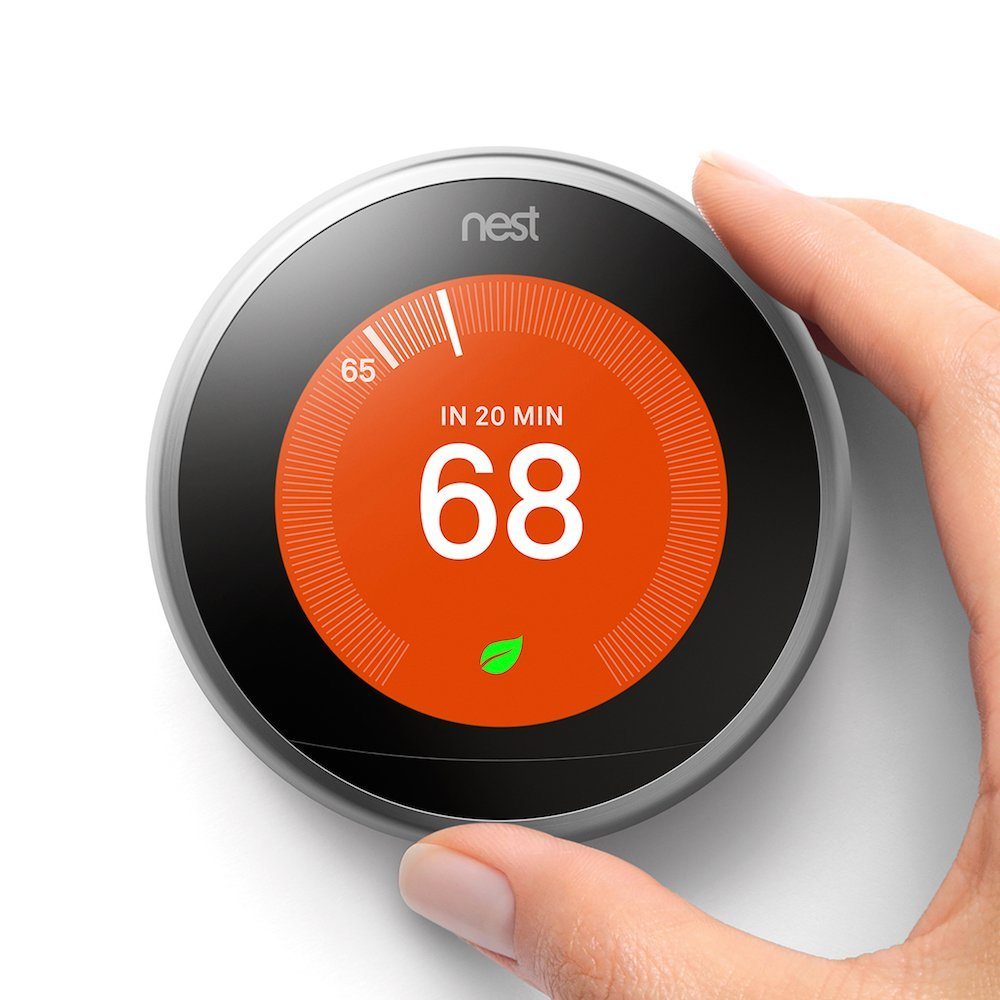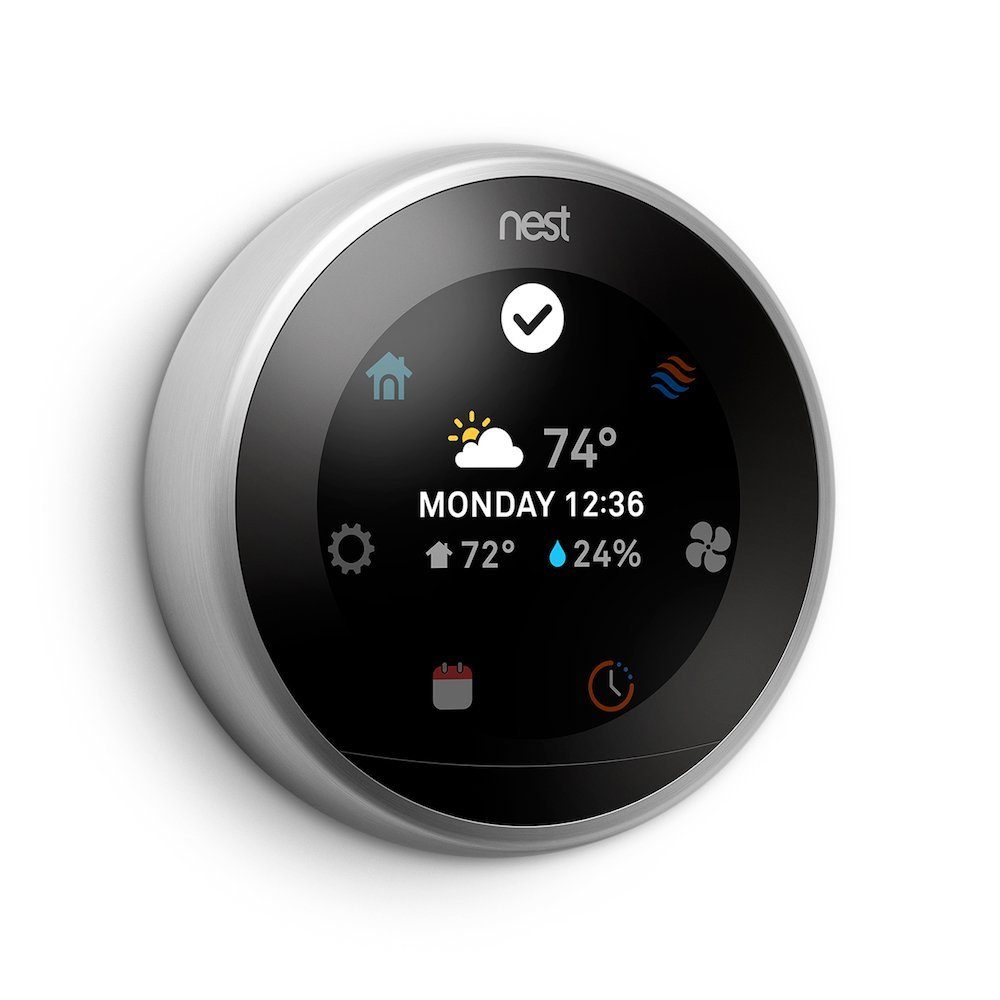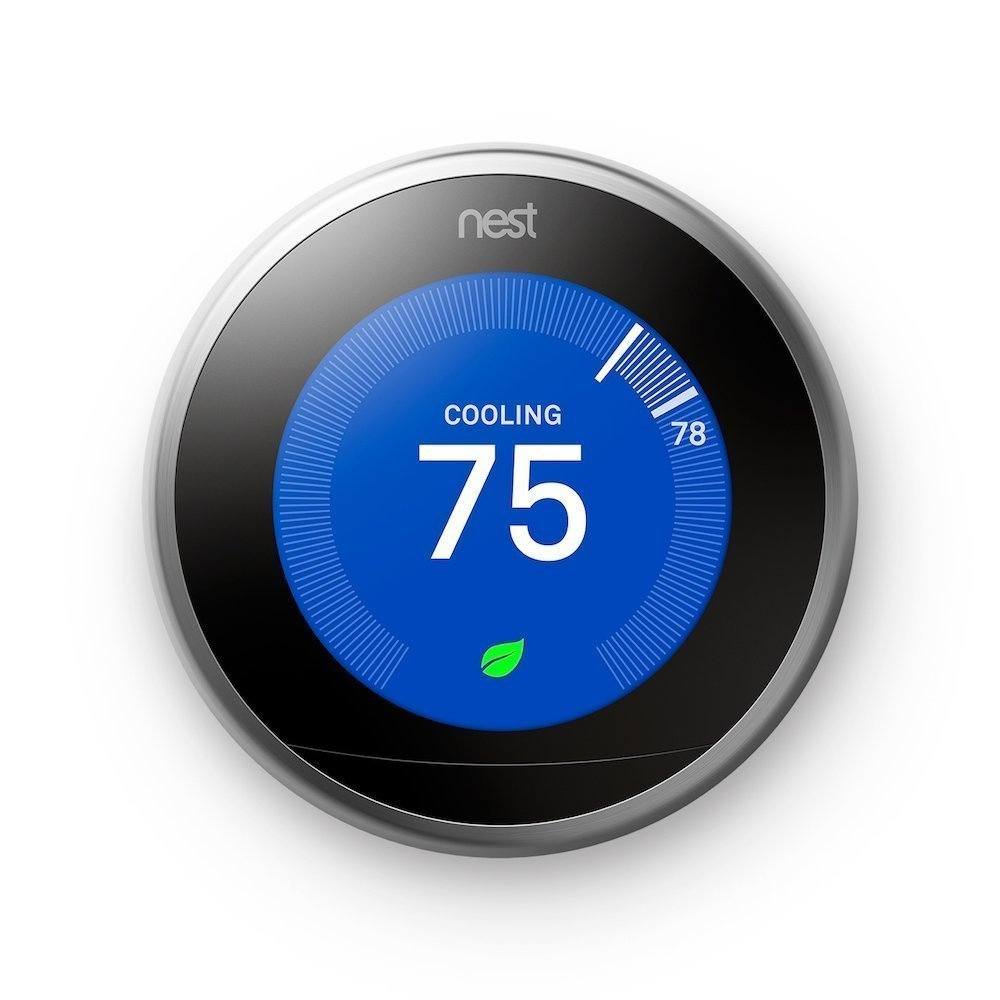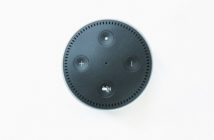Disclaimer: Please note, we do not publish sponsored posts. However, our posts do contain affiliate links, where we may be compensated for any purchases you make. This does not affect the price you pay. Thanks for supporting our site! 🙂
The Nest Learning Thermostat 3rd Generation Rated
- Ease of Use
- Smart Capabilities
- Value for Money
- Helps with Energy Efficiency?
- Reliability
- Construction Quality
SHJ Verdict
The Nest Learning Thermostat 3rd Generation is a sound investment for those looking to reduce their energy consumption while easily maintaining a more comfortable home.
Set-up is easy and while its not compatible with every home, the Nest still shines at the top of home automation.
Managing the temperature in your home can be a nightmare. Much of it may seemingly be out of your control, and you always have to be worried about what that energy bill will look like at the end of the month.
In other words, most thermostats require you to watch them like a hawk, excessively sensitive to every change in outdoor temperature, always wondering whether it’s cold enough to kick on the heat.
The fact that most thermostats have to be adjusted incrementally to avoid enormous energy costs makes that dance even more difficult.
The Nest Learning Thermostat (now in its third generation) takes care of all that by giving you a thermostat that works for you, as an individual, adjusting to your preferences and saving you money you didn’t even know you could save.
In this Nest review, we’ll look at why it’s considered the best smart thermostat on the market right now and see what this technology can offer you above and beyond your average analog thermostat.
Contents
Nest Learning Thermostat: The Details
Specs
- Dimensions: 3 x 1.2 x 3.3 inches
- Weight: 1 lb.
- Product type: Smart thermostat
- Voltage: 24 volts
- Wattage: 0.123 watts
- Battery: Rechargeable ion, 10-hour life
- Connection: Wi-Fi and Bluetooth
- Warranty: 2-year
- Compatible with Alexa: Yes
How Does It Work?
Nest’s primary goal is to help customers save energy—and money—on a monthly basis. With finely tuned sensors, the Nest Thermostat is able to gauge when to tell your cooling system to kick into gear without you manually flipping the switch.
Those features don’t even require any programming on your part; the Nest learns what temperature you like and when you’re home, and it will adjust your system to perfectly match your preferences.
The Nest uses motion sensors to know when someone is at home, and it also recognizes your phone’s location so it knows to tag you as Away, which triggers an energy-saving mode that will help balance your energy consumption.
Nest is an incredibly smart system that can become fully hands-off if you want. You can control it through an app, even when you’re not at home, but Nest has it covered if you don’t want to give it more specific instructions.
The third generation of Nest differs from its previous incarnations in a few significant ways.
First, this version has 10 sensors compared to its previous 3 sensors, which makes its temperature readings so much more accurate.
Second, the display is larger and more vibrant and crisp, and you can make sure it only lights up when you walk into a room (when you actually need it).
It also can detect carbon monoxide and turn off a furnace before it becomes dangerous, a majorly impressive safety feature.
The Nest system comes with everything you need to install the thermostat: installation guide, screws, and a trimming kit.
The installation guide will walk you through the process of connecting your Nest Learning Thermostat to your heating and cooling system by just connecting a few simple wires.
Don’t worry, it’s easy, and Nest is really helpful about answering any questions you may have.
Nest: The Company
Nest has quickly become the No. 1 bestselling programmable thermostat on the market.
The company was founded in 2010 by two former Apple engineers, Matt Rogers and Tony Fadell. Since the first Nest Learning Thermostat release in 2011, the company has grown to become a trusted brand in home automation.
Since then, the company has continued to expand with products and employees from their Seattle home.
Nest advertises that anyone can install the system in thirty minutes or less, and that ease-of-use in addition to the powerful tech built into each tiny device, makes for a truly impressive bit of gear.
Nest vs. Ecobee
One of Nest’s competitors, the Ecobee, hasn’t carved out quite as much of the market as Nest, but both brands have advantages.
Both allow you to purchase add-ons to give yourself even more control of your environment, such as Nest’s humidifier/dehumidifier features.
The Ecobee gives you a way to set up remote sensors in parts of the house that aren’t near the thermostat, which is good if you have odd circulation patterns and want to make sure your thermostat is tuned to a specific part of the house.
Those remote sensors also keep Ecobee from turning on when you leave a room; Nest’s workaround for that problem is to sync to your phone, so as long as your cell phone is at home, it will never flag you as “Away.”
Nest Learning Thermostat Review
The Positives
Beautiful Display
We love how much the display pops on the Nest Learning Thermostat. No more peering at tiny markings in the dark or not being quite sure what you’ve set your thermostat to do.
The display is an improvement, both in size and resolution, from the second generation, and it can scroll between many different screens, showing you the daily weather, temperature, energy history, or whatever it is you prefer.
And it’s so gorgeous that it’s practically another decoration for your walls.
Powerful Motion Sensors
The motion sensors on Nest devices, called Farsight, can detect when you enter an empty room, and that movement helps Nest log your schedule and brightly pop on its display to greet you.
You can set the sensor so that it recognizes pets vs. humans, keeping it from thinking you’re home when you just have a hyperactive dog getting some playtime in.
Although you have to buy remote sensors separately if you want to place temp controls in other rooms, Nest does a great job of handling almost any situation you can throw at it.
Easy Set Up
If you’re the type to hide from technology or let your friend in IT handle all your tech issues then the idea of having a ‘smart’ anything in your house might be alarming.
No need to fret when it comes to the Nest Thermostat. If you’re home is compatible it won’t take you hours to fumble through as most people get the whole thing running in just 30 minutes.
Even those with little tech knowledge or two left hands have been able to get the thermostat running with ease.
Here’s a video showing what the Nest Thermostat looks like out of the box and installed.
Saves on Bills
The Nest Learning Thermostat is great for dodging those extra large energy bills that seem to skyrocket out of nowhere.
The Nest is Energy Star certified so you know it will definitely save on your energy consumption. And it gets bonus points for being the first thermostat to get this certificate.
Studies have shown that when using Nest, users have saved up to 15% on their cooling bill and up to12% on their heating bill.
So while you initially pay a couple hundred dollars for the thermostat in the beginning, it will end up paying for itself in the long run.
Warranty
Warranties are super reassuring, especially when you’re making changes to your home. It lets us know that the company stands behind the product and supports what the product is supposed to do.
When you purchase your Nest Thermostat, a two year warranty is included so you won’t have to worry too much after setting it up.
If there are any faults, simply contact Nest and they will repair or replace your thermostat without hassle.
Nest also wants you to love their product and offers a satisfaction guarantee. If you’re not satisfied, you can say good-bye to your Nest within 30 days of purchase.
With this much backup, we think it’s worth a go.
Amazing Customer Service
The Nest team is incredibly receptive to user feedback.
Efficient energy control requires a great deal of expertise to get right, and Nest seems ever-ready to share their knowledge with their customer base, going above and beyond to resolve problems or questions.
Nest thermostats have gotten better and better, too, adding and updating features to respond to little bugs that users come across or to user preferences.
The Negatives
Not Always Compatible
It might be expecting too much to hope that Nest would work with every heating and cooling system, but many homes outfitted with older or high-voltage systems may simply find that the Nest Learning Thermostat creates more uncertainty than before.
You’ll need to invest quite a bit of research before you decide to buy a Nest, checking the voltage of your current HVAC, the state of your wiring, and even the average weather for your home so that you’re sure the Nest can “learn” your routine.
You may also need to be patient with it as it traces you over the first few weeks.
Most people don’t have any problems, but it’s probably a good idea not to start using Nest in the dead of winter, in case something goes awry.
Limited Display Options
The Nest is built so that you don’t have to fuss with it much; the idea is to connect it and let it do all the work.
But for people who want a greater amount of control over settings–such as programming multiple schedules, swapping temperature and weather displays, or searching the energy history–you may find the Nest a bit too simplified.
That’s an inevitable weakness that comes when trying to make an intuitive, easy-to-use product for a lot of people; it’s just in Nest’s best interest to limit the number of things that can go wrong, and that means trying to dissuade us messy humans from interfering as much as possible.
If you want lots of options, you might want to look into other brands that would afford you a little more flexibility.
Overall Verdict
An undoubtedly genius device that makes energy-saving seem effortless, the Nest Learning Thermostat gives you an adaptable, beautiful system that takes away all the worry over changing temperatures.
The complexity of the thermostat’s learning software also takes away some of the choice you might have in a simpler, analog thermostat, and Nest won’t “take” to every home, even if your air conditioning is compatible, but the Nest Learning Thermostat will remain a leader in smart thermostats for good reason.
Where to Buy the Nest Learning Thermostat 3rd Generation
Since its release, the Nest Learning Thermostat has become a popular choice for making your home more comfortable through smart technology.
As a result, it won’t be too hard to find the Nest thermostat in-store or online.
To start, the Nest thermostat is available at the following online retailers.
- Best Buy (from $249)
- The Home Depot (from $249)
- Nest (from $329)
And of course, its also available for purchase on Amazon.
That wraps up our review on the Nest Learning Thermostat 3rd Generation. Have we tempted you to give it a try?









